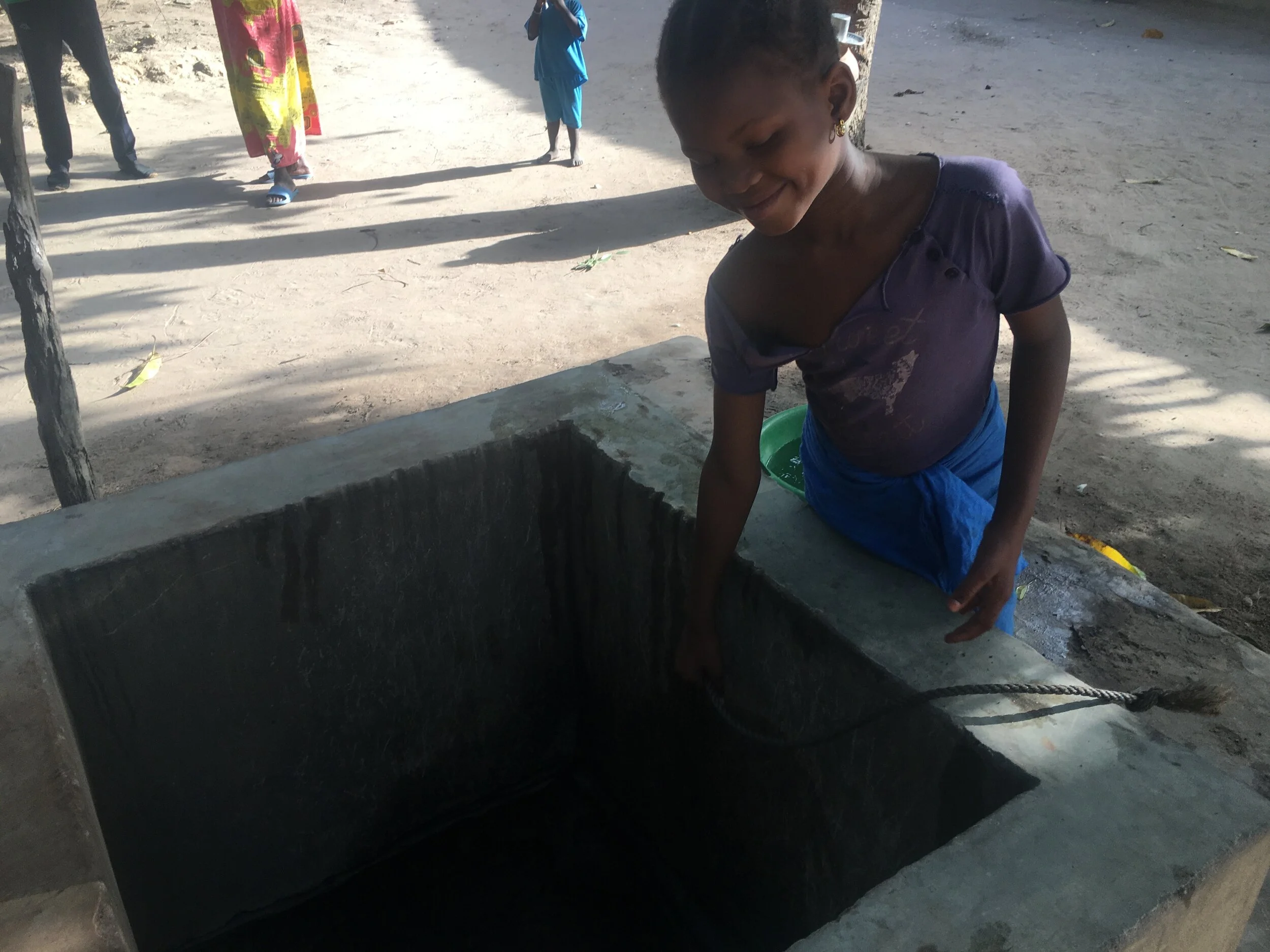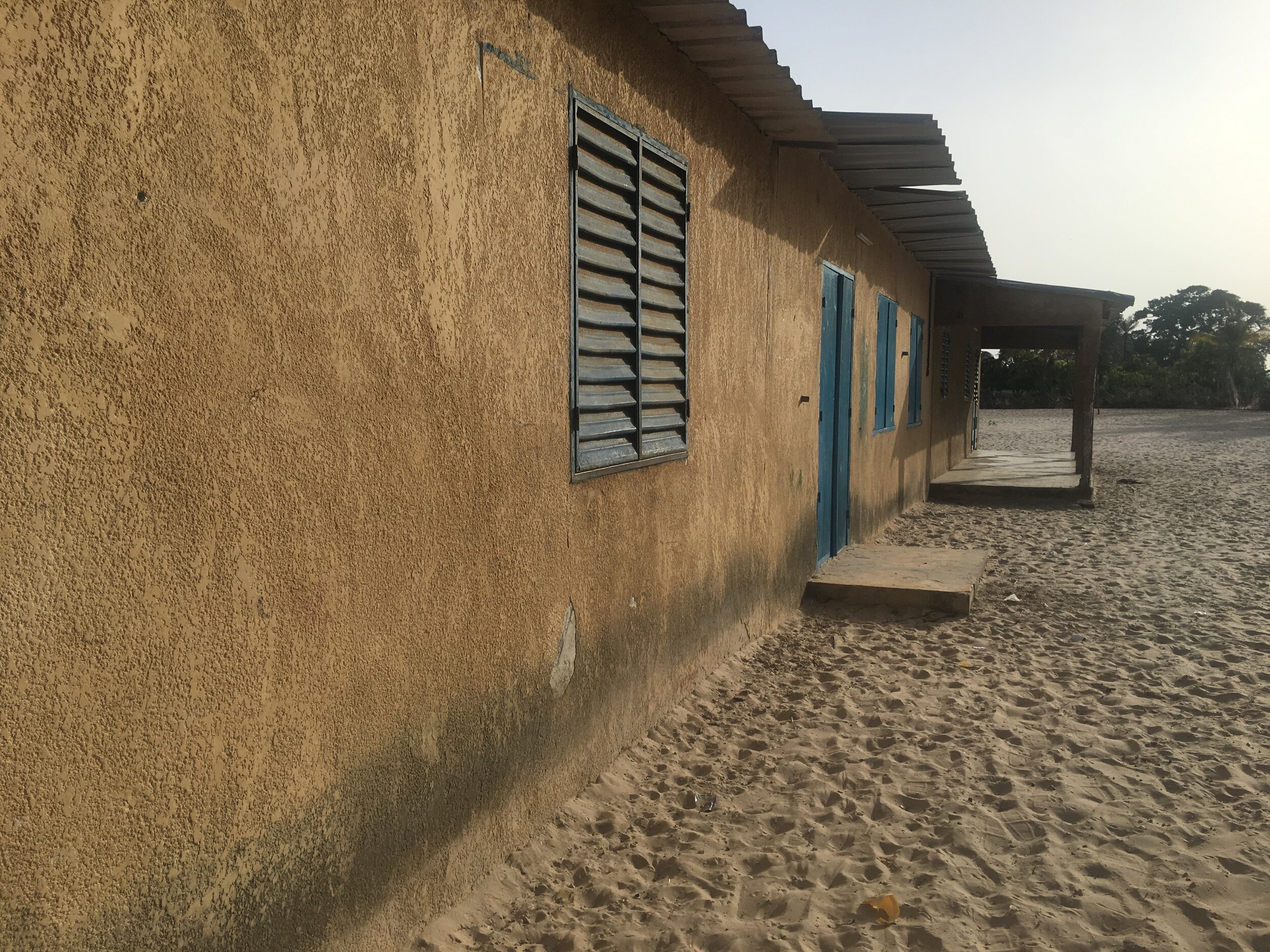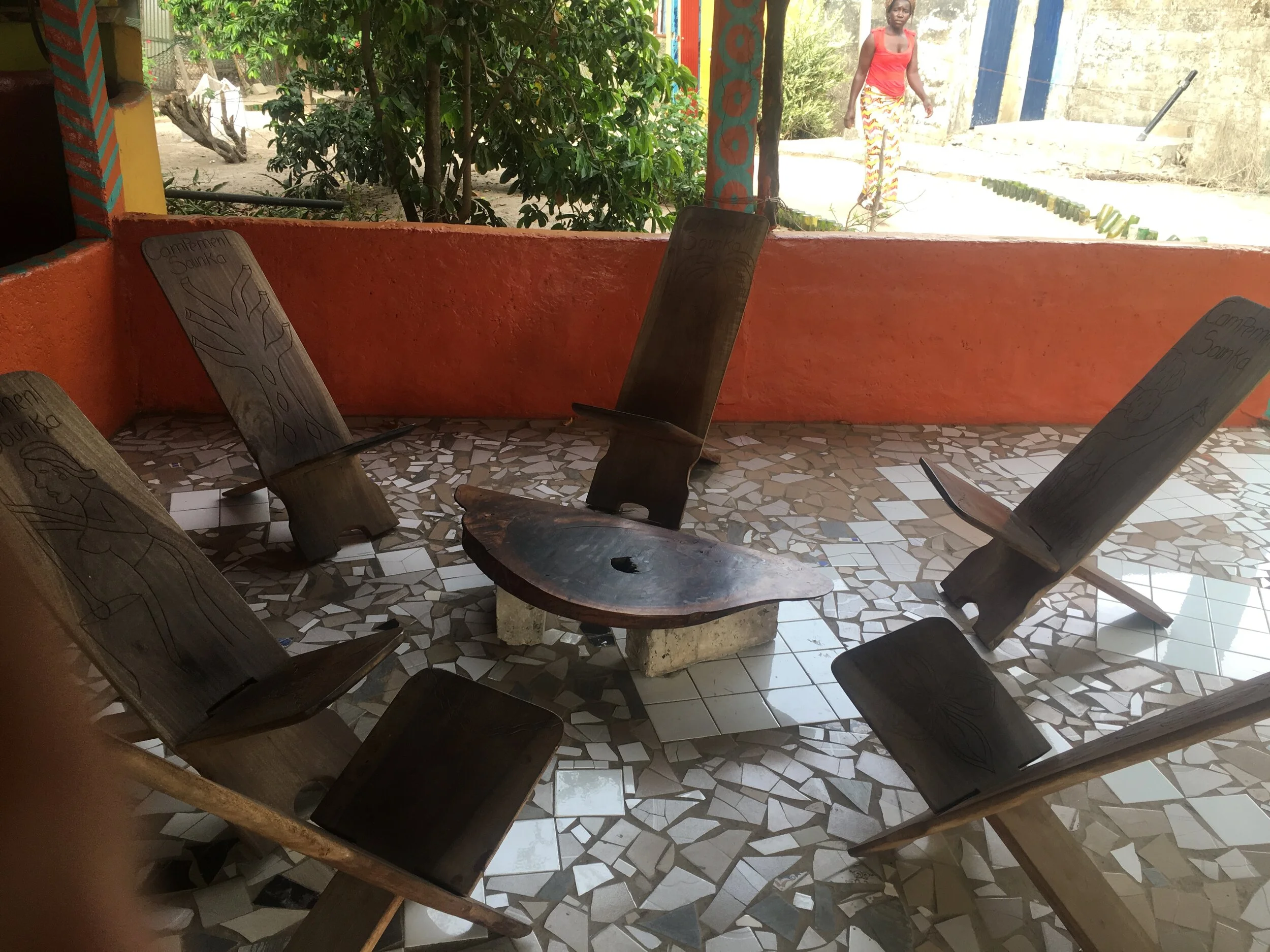Village Life
Our driver is Samba, the same driver who picked us up from the ferry dock and brought us to the hotel and showed us the calabass fruit. HIs station wagon is cramped with he and Paco in the front and Chris, Megan and I in the back seat. We’re going to Samba’s village to experience every day life in Casamance.
The drive is dusty with divets every so often in the road where the rainwater will drain when the rains finally come. There are also speed humps translated as “donkey’s back” in French. There are more Christians down here and Paco tells us there is only one god so the Christians, Muslims and Animists get along just find and respect each other’s traditions and share what little they have.
Cesar is the pet monkey.
The village, Agnack has 700 inhabitants, several schools with kids on summer break, several mosques and a small church that looks like it hasn’t been used in quiet a while. None of the roads are paved and families are mostly gathered outside their cinderblock houses with thatched roofs.
We find our later that the house we are visiting is the family of the husband of the French woman who runs the NGO Casamance a Provance. Everyone is related here. The cook in the hostel in Dakar walked us to the canoes to go to Ile N’gor and had his friend pick us up to take us to his restaurant. Our driver to Lake Reba bypassed two other tour companies to hand us to his friend’s jeep and boat tour. Senegal runs on kickbacks and relationship building. Everyone has a cousin or a brother who can help us. Social currency matters more than income in a poor country with few options.
The children run up to us and shake our hands when we approach the house. Some of the women are roasting cashew nuts over hot coals and offer us some. There are no men around. Perhaps they’re dead from the rebellion or working or simply elsewhere. The children show us their pet monkey, Cesar. He’s tied up by his waist to a tree and tolerates being man handled by the kids. One woman (who must be close to 6 feet tall) has a foot pedaled Singer sewing machine set up under a tree. She took part in a course on sewing and is practicing what she learned. We sit in green plastic chairs under a mango trees eating the yellow fruit and trying to get our bearings.
Most of daily Senegalese life takes place outside.
I get the sense that while the family doesn’t mind our presence, they are as baffled as we are as to what we’re supposed to do or how we’re supposed to act. To them the idea that we would want to do something rather than sit around in the shade during the hottest part of the day seems foreign to them. Sitting around in chairs after sitting in the car makes us antsy. We ask for a tour of the village. You, short for Youseff, shows up on his motorcycle with a friend and joins us on the tour. He’s the younger brother of the husband of the French woman who runs the NGO and is a mechanic in Zigunchor. You wears stylishly torn jeans, a fanny pack and a tee shirt that doesn’t look dirty or torn at all. He wouldn’t look out of place walking down the street in any US city.
This man is soldering a mold to make cinderblocks, the building material of choice for many Senegalese buildings.
You and Paco show us the various plants and architecture styles in the village. We see women making fishing net weights from clay and a man soldering a mold to make cinderblocks. His colleague looks on and asks me about myself in English. I am taken aback. He says he is from The Gambia as he pours himself a cup of tea from the pot heating over hot coals.
The English-speaking Gambian man didn’t want his photo taken, but said I could photograph his tea.
There are half-naked and shoeless children running every where. There are goats and sheep and pigs. The chickens, we are told, are inside the houses because they get run over when trying to cross the main road that splits the village in two.
Senegalese tea comes in small glass cups. It’s strong and bitter with lots of sugar added.
There are overturns and rusted mills for separating rice grains from the husks. We are told the women are back to doing it by hand. The NGO who brought the machines isn’t around any more and no one kept them up.
Communal eating is the norm in Senegal.
You buys a pack of cigarettes and Paco buys a water from a shed that is as close to a store as we’ve seen. I don’t fault You and his brother for getting out and wanting something different, something better than an outdoor kitchen an a mattress on the floor in a house of 10 people.
Thieboudienne is the national dish of Senegal.
We eat communally at 5 p.m. we are ravenous as we had nothing but mangoes for lunch. Paco brought the fish and the women made thieboudienne, the national dish of Senegal. We are all given a spoon and sit around a giant platter of rice in tomato sauce served with fish, carrots, eggplant and onions. It’s delicious. I drink tea out of tiny glass cups that are refilled and passed to the next person. They may not have much but this village has warmly shown the spirit of teranga, the Wolof word for the welcoming and helpful spirit of the Senegalese people.











